|
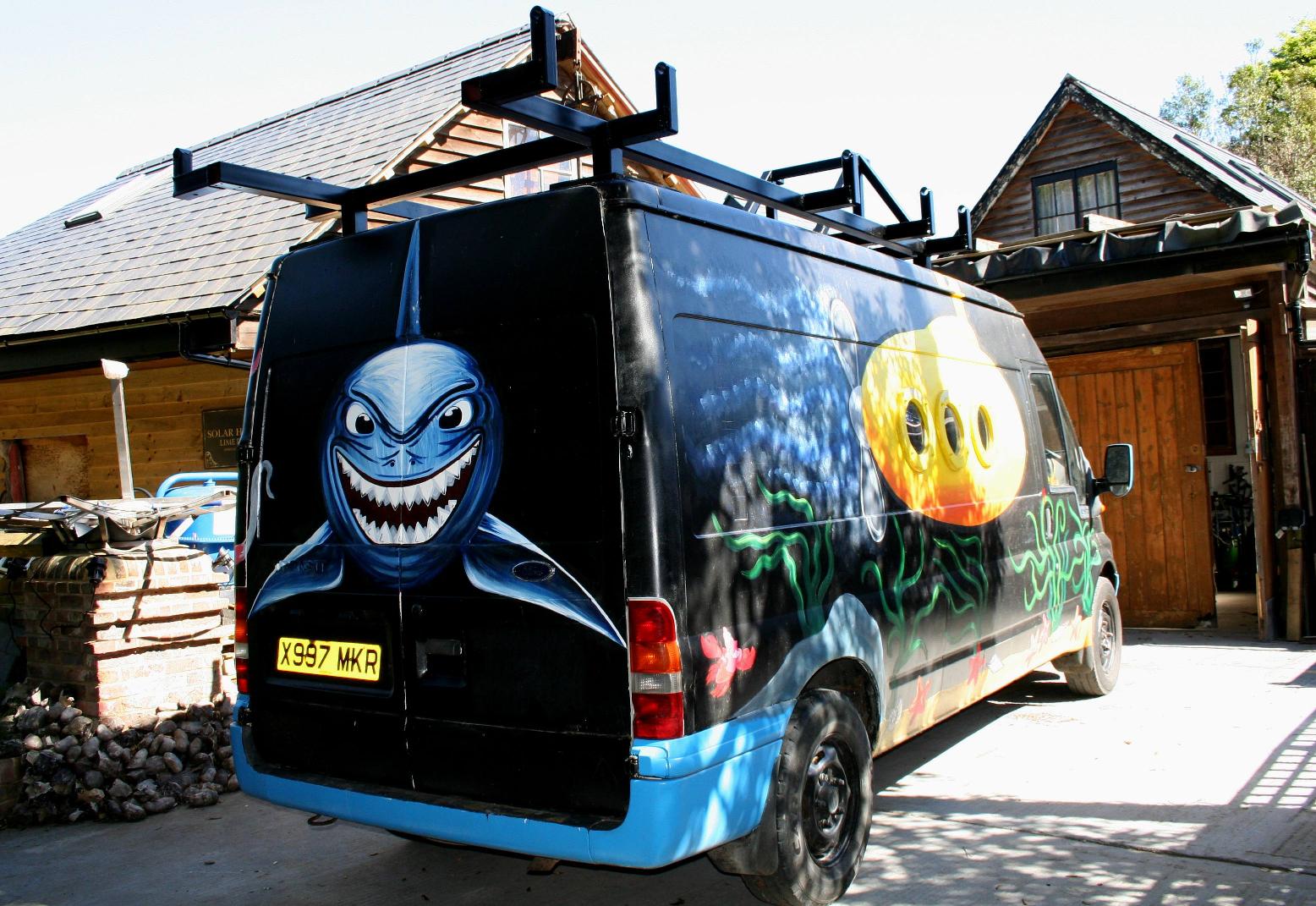
MOBILE
SOLAR
& WIND POWER -
Ideal for villages in Sub-Saharan Africa where electricity is
scarce, and tsunami devastated regions in Asia for emergency
supplies, units like this can provide stand-by electricity or
instant power where none exists at the moment. This is another
solution to potential world challenges from the Cleaner Ocean
Foundation and Climate Change
Trust. The vehicle shown is part
of an experiment in connection with river and ocean cleaning
vehicles on water.
This
converted Ford
Transit can generate renewable electricity from solar and wind energy
harvesting to provide developing regions with renewable energy without any
supporting infrastructure.
Each
village or township could own and operate their own communal power supply,
instantly! Just park up and hit the deploy button, then plug in to clean
electricity. This
prototype unit is nearing completion, with the solar wings and hydraulic
controls to be completed with low cost computer
autonomy from a Raspberry
Pi system, that is ideal for learning how to code. Any
size vehicle could be adapted, including large trucks, to provide more
energy from a bigger wind turbine and a larger solar panel area. The
addition of a wind turbine improves reliability and reduces cost in windy
locations. Sixty
percent of the solar panel arrays track the sun to increase yield, working
in tandem with a wind turbine mast that can be raised and lowered to prevent
shading of the solar
panels, together with safety furling to prevent damage
in high winds. 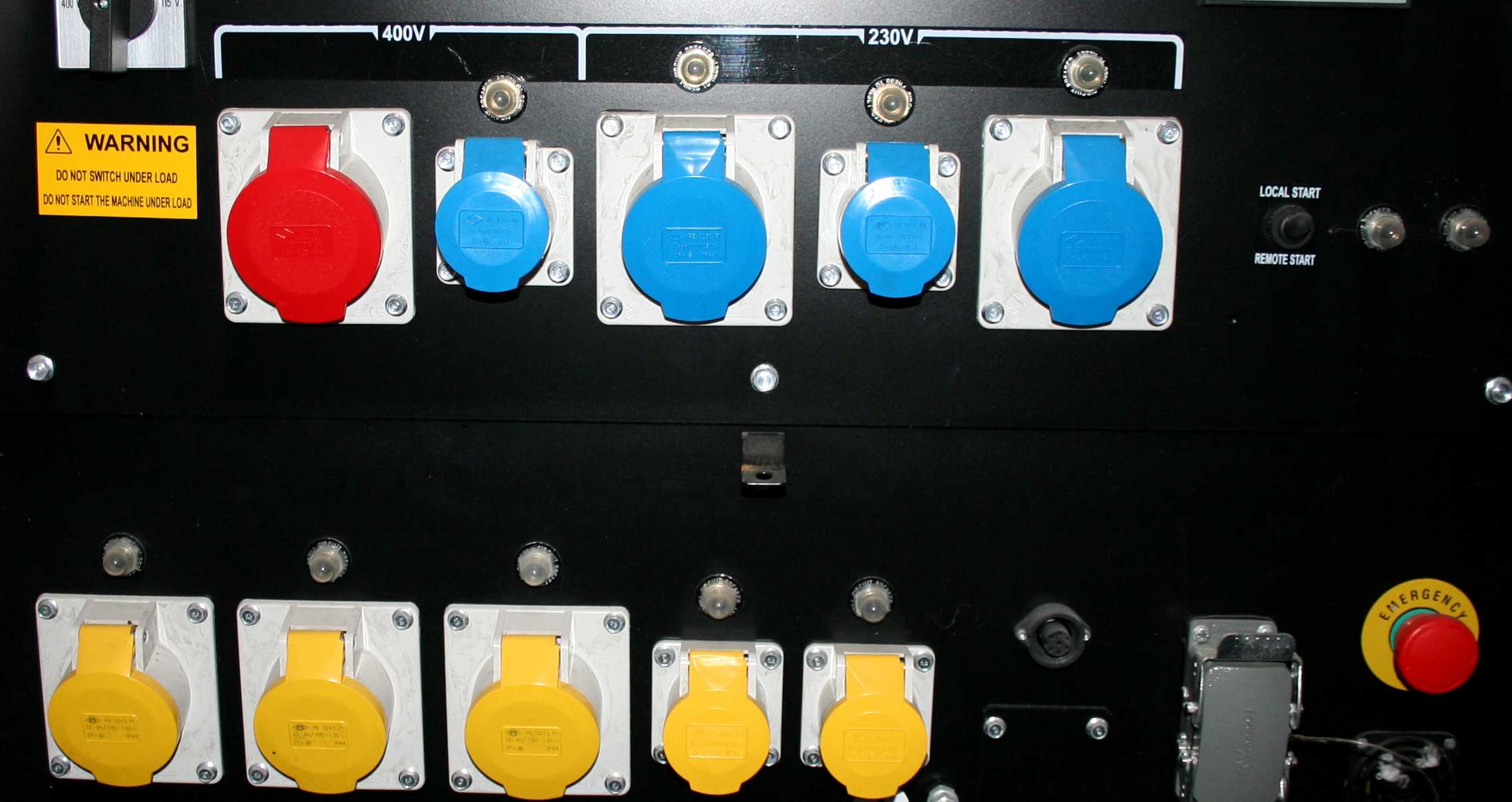
OFF-GRID
- An example control panel and sockets for off-grid power supplies. Village
halls and schools would simply plug into the appropriate socket. Such an
arrangement might be ideal for events, such as music
festivals,
such as Glastonbury
or Bestival on the Isle
of Wight.
The
vehicles could be painted to match their intended locations to blend in to
the countryside and add local flavour. In Africa, an
appropriate scheme might be sand yellow with Zebra and Elephants at a water
hole. Where
sustainability is now high on the United
Nations agendas, along with low cost clean energy
as per SDG7, this concept holds the potential to accelerate education
programmes in developing regions as per SDG4. Children would be able to do
their homework and use the internet for research. 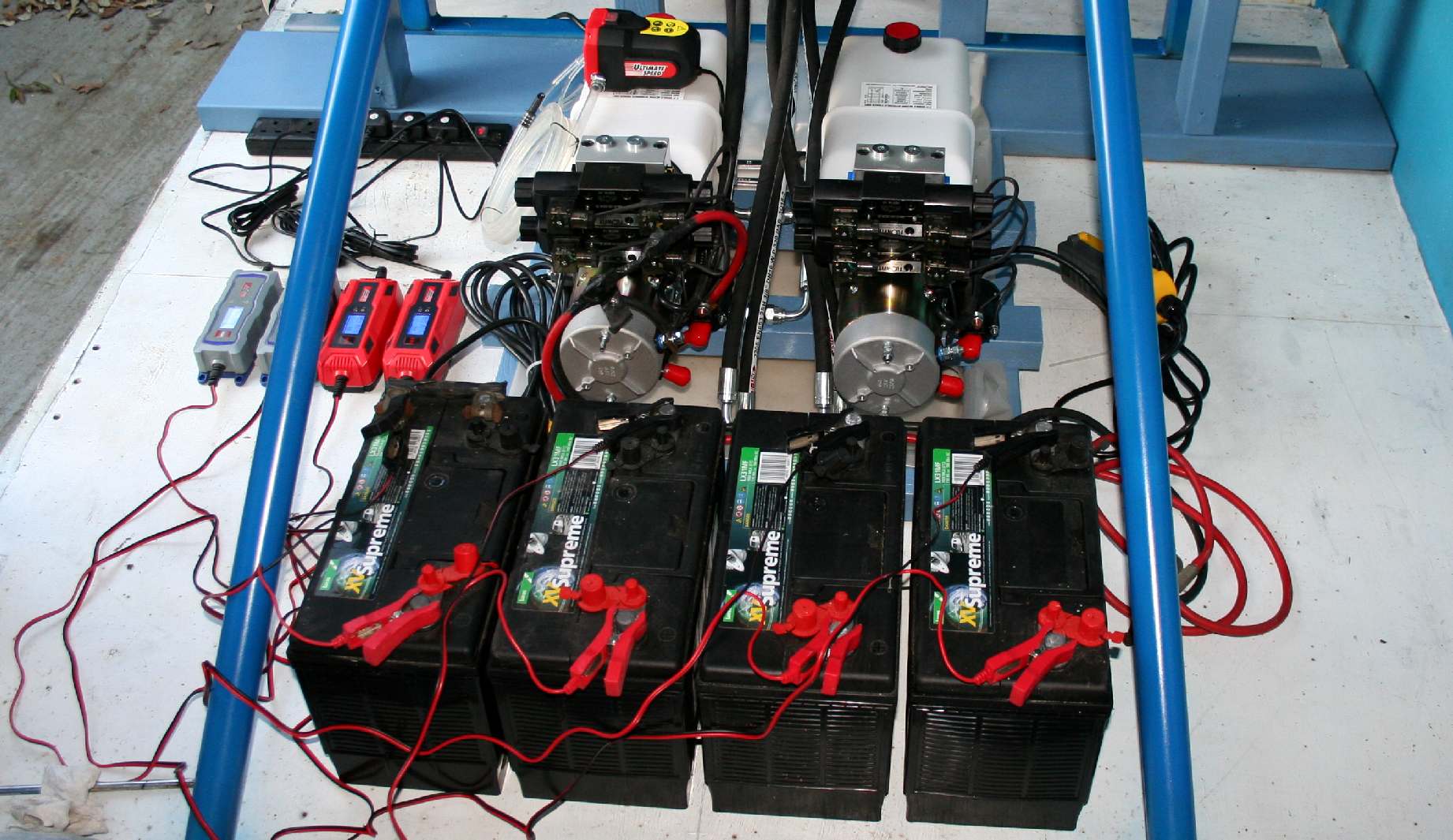
BATTERIES
- At the moment we have four LX31 marine batteries
that are a dual purpose design also suitable for cranking. The storage
capacity shown here is 420 amps giving us 5kW hours. We will treble this
capacity to 15kW/hs during our experiments, using the energy to supply the
laboratory and test tank and when working on a beach, to power the canteen
and communications. Copyright © photograph 21 June 2019 Cleaner Ocean
Foundation Ltd. All rights reserved, save for educational
and research purposes.
Each
vehicle would have onboard security cameras as standard and a quick connect
bank of sockets. If there were problems with any supply area, the mobile
unit could be relocated to a safer location where it was
appreciated. Connection
could be as quick as driving into a township and allowing the locals to plug
in. The question as to funding and who pays is another matter to be looked at with local
development agencies. Our part in such projects would be to provide the
mobile units to order, subject to agreement as to terms. We
might also install systems or show the locals how to maintain and set up for
themselves. Why not contact us for
an estimate. 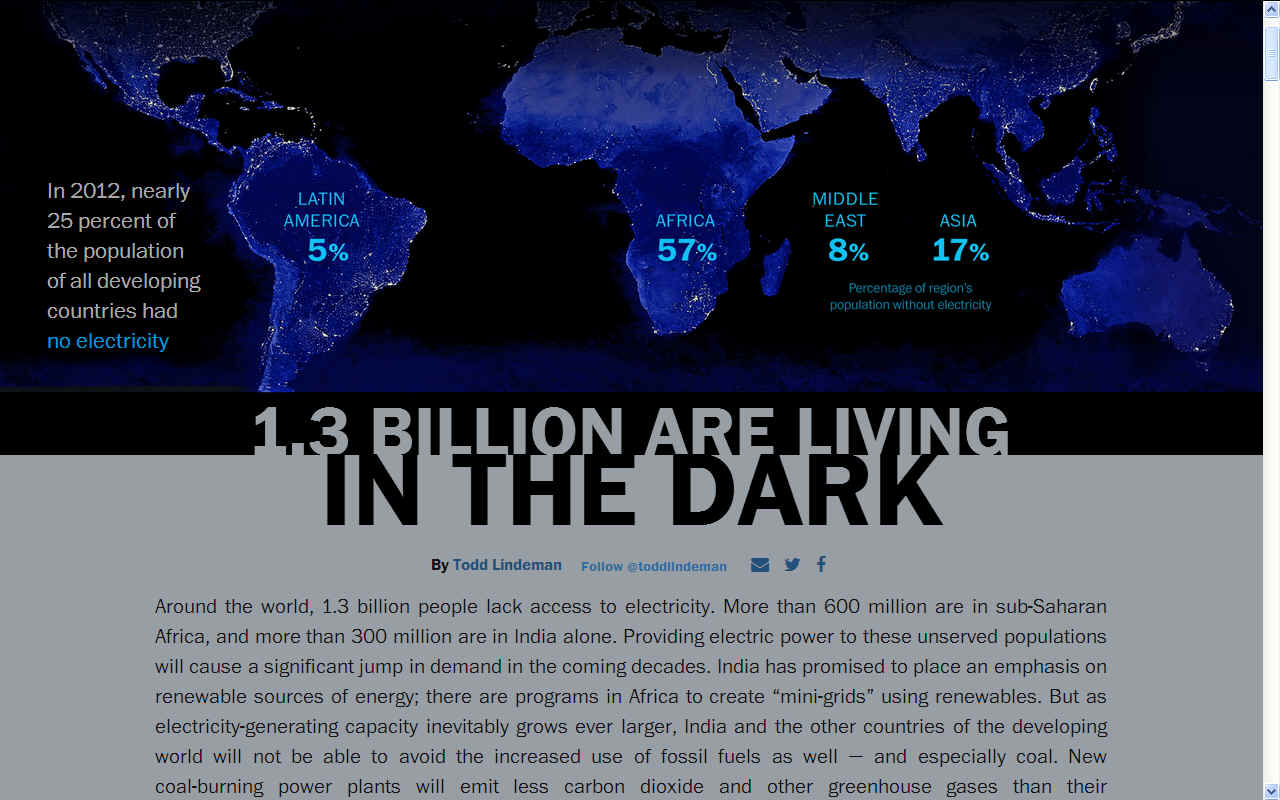
A
RURAL SOLUTION ? According
to many news reports, there are barriers to electricity grid connections,
the main ones being cost and timescale to connection.
One of the major barriers to electrification is the cost of a grid connection. A grid connection in
Kenya, for instance, is estimated at USD$ 400 per household. This is nearly one-third of the average per capita income of a Kenyan.
Beyond pure cost barriers, urban communities often can’t access energy services for other socio-economic reasons. For instance, not being metered because they don’t have a formal address. Or living
in an area that is difficult to service – such as near flood plains or in informal housing settlements.
Corruption among electricity service providers, power theft by customers and the establishment of electricity cartels also complicates and limits
electricity
access. 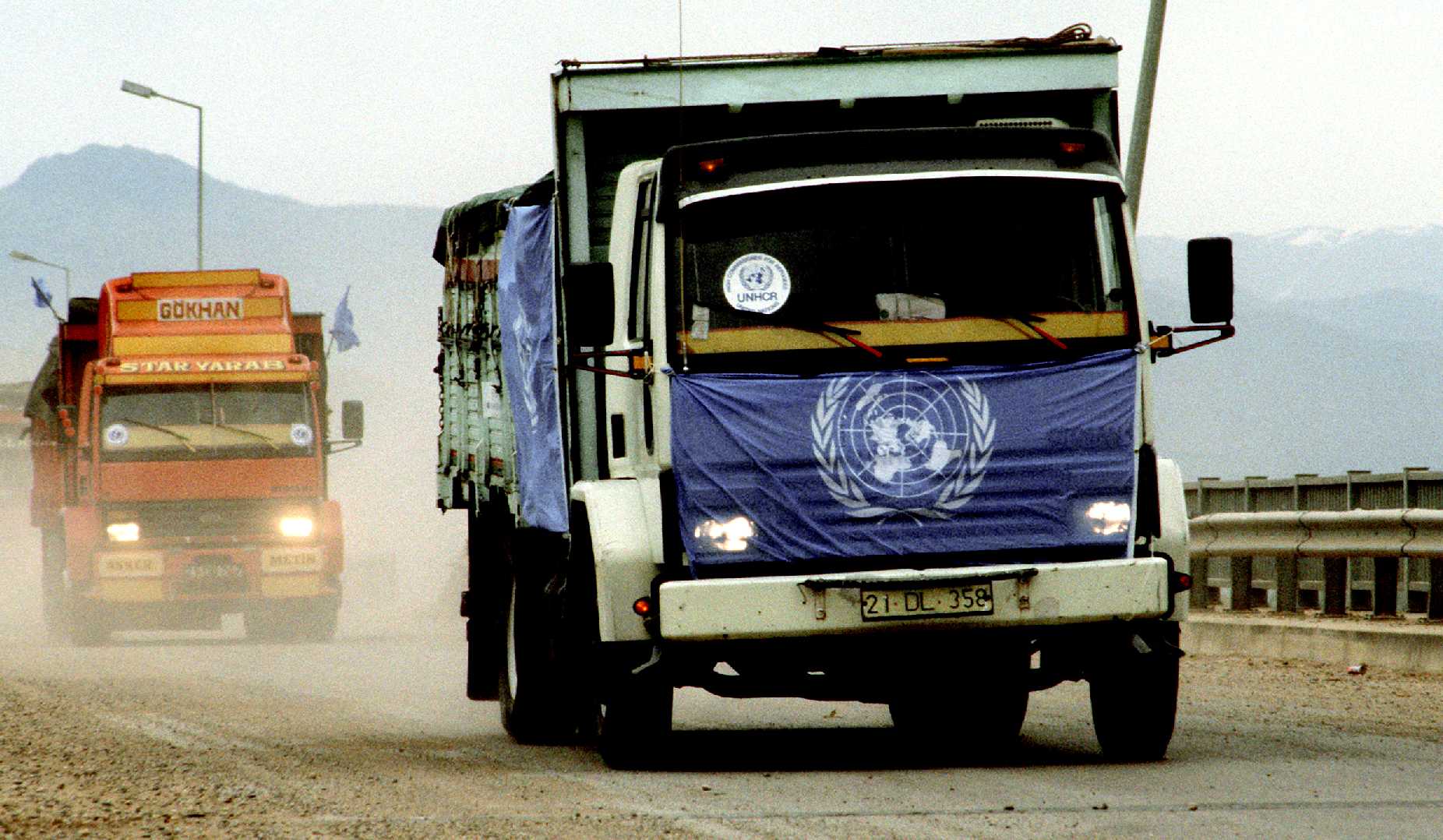
Finally, the utilities themselves face many challenges in implementing reforms to get more people connected. Take the example of the Kenya Power and Lighting Company, which owns and operates most of the electricity transmission and distribution system. In 2015 it introduced a
subsidized connection fee of US $150. This was done through the Last Mile Connectivity Project. In one year, this installment-based payment plan led to a 30-fold increase in legal electricity connections in impoverished neighbourhoods.
But the project was marred by cost overruns and inflated and misreported new connection numbers. On top of this, newly connected households often have very low consumption levels and low-income customers were often unable to make payments, even at
subsidized rates.
Without the necessary infrastructure development, experts argue that the program puts a strain on the technical, commercial and financial resources of the utility. This means that the programme may find it difficult to generate revenue, recover costs or provide the service intended to new customers. 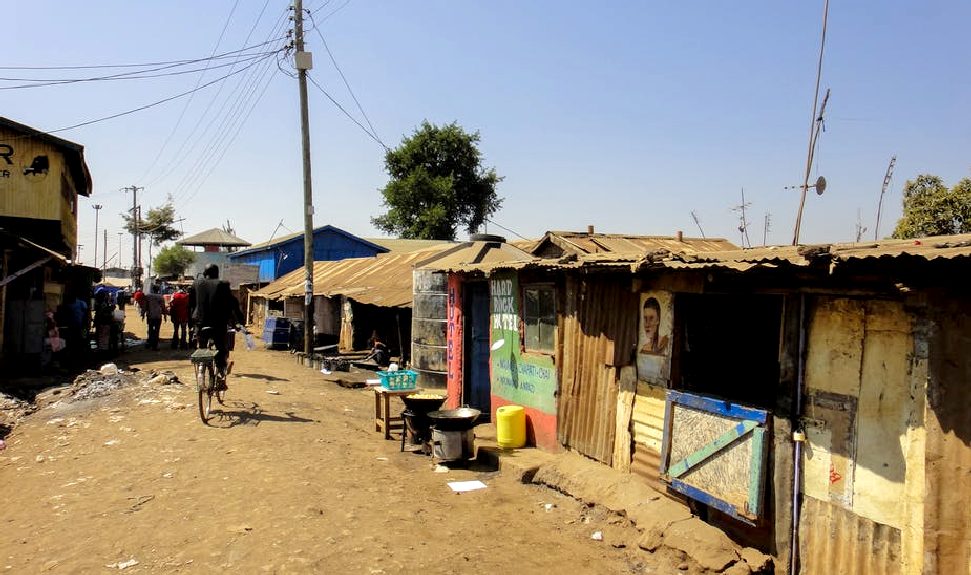
AFRICA
& INDIA - In
2015 a world report concluded that 1.3 billion people were living in the
dark. Rather than looking at this as a problem, we might take the
alternative view that this is an opportunity to build an off-grid supply
network using only renewables - so ensuring that what might be perceived as
more strain in terms of climate change, might be prevented. We might achieve
this with mobile units to begin with, until the affected regions have time
to build permanent networks with installed wind and solar
energy generators.
DECENTRALIZED
RENEWABLES
Decentralized renewable energy technologies offer an important solution for “under-the-grid” electrification. They are simple, fast and agile. They have short installation times, and offer a reliable electricity service for informal settlements.
Pay-as-you-go solar systems and appliances, for example, can provide a much lower barrier to entry. Compared to the high upfront connection costs noted earlier in Kenya, a 15-watt solar home system costs on average USD $9 per month for 36 months after which point the household owns its system.
The renewable energy sector recognises this under-the-grid market. In fact, about 35% of solar lighting product sales in Kenya are made in peri-urban areas. And it’s a good bet. Evidence shows that the willingness to pay for
decentralized renewables is much higher than a grid connection because they are seen as more reliable.
Policies to support decentralized technologies include: integrated energy planning that incorporates these solutions, adopting and enforcing product quality control standards and providing financial incentives – like reduced import duties for products or local loan and grant programs.
SENEGAL
Affordable and clean energy is the foundation for many of the United Nations
Sustainable Development
Goals. Modern energy, like electricity and liquefied
petroleum
gas, is a vital need for industries and households. But more than 40% of residents of the world’s least developed countries don’t have access to electricity. In developed countries that figure is only 10%.
There are huge benefits in accelerating energy access. These include economic benefits as well as increased studying time and reduced
pollution. But, closing this energy gap is a
Herculean task and there’s been very little progress. Investment in renewable energy and
energy efficiency must increase by a factor of five if universal energy access is to be achieved by 2030.
Senegal stands out among least developed countries as having made the biggest strides in expanding energy access. In this grouping, which includes 30 other African countries, it has one the highest rates of electricity access and is the only one with electricity access above 50% and near universal (about 85%) access in cities.
Senegal has a young and growing population. More than 60% of its residents are under 25-years-old and more than 75% of Senegalese work in agriculture. But industries like food processing, mining, and
fertilizer production are also important. Improvements in energy systems would help
modernize these sectors.
To achieve universal energy access by 2030, the UN says Senegal must double its electrification rate. Currently, only 33% of rural Senegalese have electricity access. But connecting rural homes to the
centralized grid is too expensive for most households and building the transmission infrastructure will take years.
Last year Senegal took steps to address these challenges, starting with diversifying its energy mix. About 88% of Senegal’s electricity is generated from
fossil fuels and the rest is from renewable energy. It aims to increase the proportion of renewables to 20% by 2017. One of the ways it is doing this is by tapping into solar energy.
Senegal is also taking up microgrids to improve accessibility. Microgrids consist of an electricity generator (that runs off
diesel or solar panels for example), users of the electricity, a means of connecting them and a way to regulate the flow of electricity. It can run on its own or may be connected, now or in the future, to the main electricity grid. These can help electrify rural villages as was seen in
Ghana when microgrids were used to electrify four remote communities, serving 10,000 people. Although this is a small portion of Ghana’s total population, the project shows that microgrids can improve energy access in rural areas and can be replicated elsewhere.
Solar
Senegal’s per capita electricity consumption is 221 kWh annually, although this is undoubtedly higher in cities where access to electricity is high. In 2017 West Africa’s largest solar park went online in Senegal. The 30 MW grid-connected facility is a substantial increase to the country’s 650 MW of electricity generating capacity. A rough estimate shows that the facility could produce about 48 million kilowatt-hours of electricity each year – equivalent to the consumption of more than 215,000 Senegalese each year.
Senegal has several other solar projects, either completed or under construction. The state-owned electric utility issued a call for qualified contractors to build an additional 100 MW of new solar projects. These include a 15 MW grid-connected solar facility near Dakar in the city of Thiès – an impressive project that will enhance energy access in the populated west of Senegal.
Achieving universal electricity access among all 15 million Senegalese, however, will require much more investment in diverse generation sources and modes of delivery. This includes both grid connections and independent micro-grids. 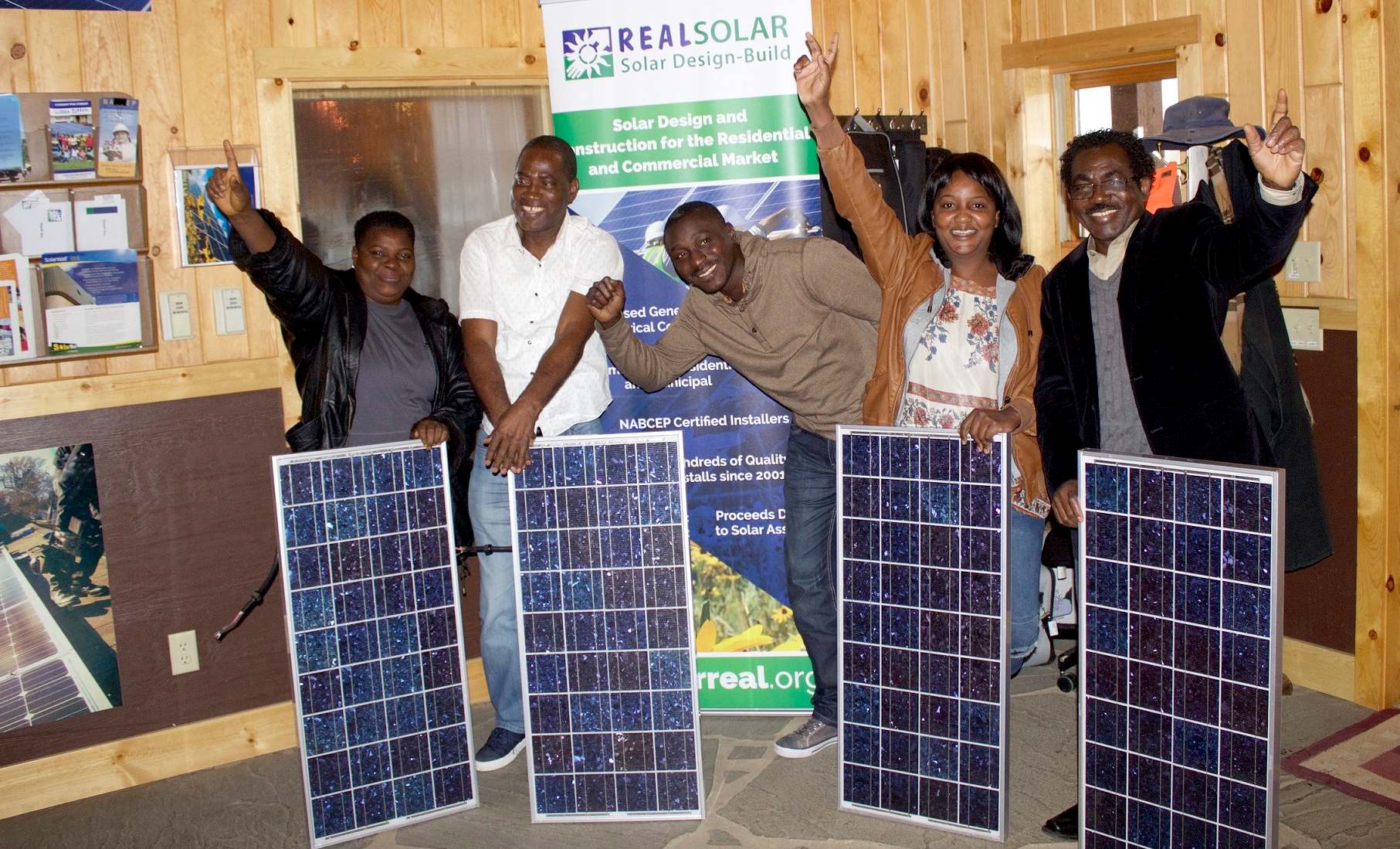
MICRO-GRIDS
Expanding grid-based electricity generation, while important, is insufficient – particularly in rural areas that are not grid-connected. Most households cannot afford the connection cost and building transmission infrastructure takes years. Millions of people miss out while waiting for a grid connection.
Microgrids can bring electricity access to rural areas without the costly and time consuming
build of a grid connection.
Senegal and other African countries, with help from the World
Bank, are investing in micro-grids. Senegal’s policy framework, encourages microgrids. The policy includes a top-down approach for relatively large microgrids covering broad areas and a bottom-up approach for entrepreneurs to build small microgrids in rural areas.
The Senegalese government has also issued tenders for larger-scale micro-grid projects. For example, a Moroccan utility won a bid to construct a micro-grid to serve 21,800 households. Another promising development in Senegal is a plan for 2 MW of off-grid
solar power with storage in seven remote locations.
Senegal has demonstrated, there isn’t a single approach to delivering modern energy services. Throughout 2017 it showed that grid connected, utility scale solar projects complement remote microgrids to bring clean, reliable, and affordable electricity to rural and city residents alike. These efforts to address the “energy access dividend” will help Senegal graduate from the list of least developed countries. 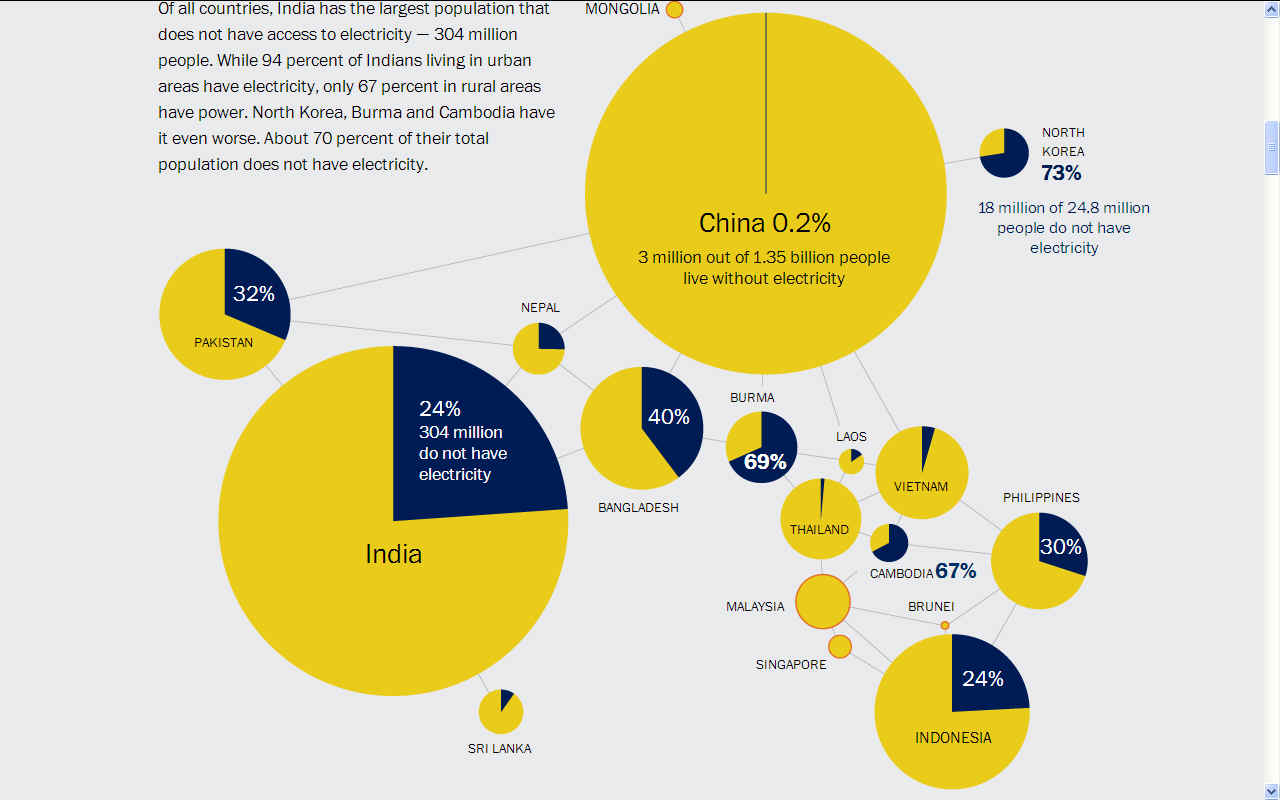
AFRICAN COUNTRIES WITH LOWEST ACCESS TO ELECTRICITY
10. Tanzania (15.3% of population)
Tanzania is in great want of electrical energy, and only 15.3% of its population has access to electricity. Nonetheless, the country boasts of having a
wealth of different potential energy sources from biomass, solar, wind, coal, geothermal, natural gas, and uranium alike. Unfortunately, most of these have remained underdeveloped. The rural areas use biomass collected from Tanzanian forests to meet about 80% of their energy needs, such as burning wood for cooking and
heating, further worsening habitat degradation there. A study was conducted in regards to bringing electricity to Tanzania's rural areas, though most means were found to not be feasible. TANESCO is the national utility supplying much oif the limited supply of electricity to the nation. The government continues to improve its goal of
bringing electricity to all of its regions' peoples. 9. Niger (14.4% of population)
Niger has difficulty supplying electricity to its citizens, and the utility serves only around 14.4% of its population. Much of Niger's population lives in rural areas, most of which are without electricity. Although electricity is not the main energy used by the local people, and most of them are used to going without it, the access would help improve economic development and the overall advancement of their lives. As in many other parts of Africa, biomass is the most widely used energy source here. Liquefied
petroleum gas (LPG) is another fuel that households could increasingly utilize in years to come. 8. Sierra Leone (14.2% of population)
Sierra Leone has only about 14.2% of its population currently having access to electricity supplies. The World Bank has made available to Sierra Leone a $40 million credit line, with which it could expand the electricity available to its rural areas. The Energy Sector Utility Reform Project will put up a viable management structure that should improve the national electricity distribution all over the country. This would in turn improve social services, health, and education, as well as present new economic opportunities for Sierra Leone's rural families. 7. Burkina Faso (13.1% of population)
Burkina Faso is also in short supply of energy, and only 13.1% of its population has access to electricity. In 2013, the World Bank granted a $50 million credit to assist the country in its electricity supply development project. This would include the improvement of the power supplies to around 40 rural towns, by way of putting up new transmission lines. The goal is to establish a more reliable power grid that would improve those in rural areas lives as a whole. This project will also aim to improve Burkina Faso's hydropower and thermal stations' capacities and reaches. All of these efforts are done in the hope of improving the living standards of the nation's citizens. 6. Central African Republic (10.8% of population)
The Central African Republic has only 10.8% of its population supplied with electricity. The main cause for this shortage has been the string of frequent rebellions and military coups seen there which have spawned a number of economic crises. This was worsened by the displacement of more than 930,000 of its citizens in 2004 due to these local conflicts. In fact, 50% of the country's population are dependent upon humanitarian assistance. It will likely be some time before electricity requirements are met, or even an improvement seen therein, until the country attains a more stable government. 5. Liberia (9.8% of population)
Liberia also has a short supply of electrical energy, and only 9.8% of its population has electricity. The energy supply in the country is mainly sourced (80%) from biomass, most of which goes towards cooking and heating needs. However, the city of Monrovia has about 85% of its population using charcoal. Some rural households use electrical generator sets, though these need expensive, imported fuel to run. The majority of the electricity and petroleum available in Liberia are used for transportation and urban industrial production. 4. Malawi (9.8% of population)
Malawi has a shortage of infrastructure to supply rural electricity as it is needed , and only 9.8% of its population has access to it. The government's program under the Energy Sector Support Project has involved studies looking into adding additional hydropower stations, as well as those powered by wind, solar, and bio-gas sources. The World Bank was the source of an $85-million loan facilitating part of the project. The government hopes to widen its electricity reach out into its rural areas with the prospective success of this project. 3. Burundi (6.5% of population)
Burundi is also in short supply of energy, with only 6.5% of its population having access to electricity. Although 90% of its total population lives in rural areas, only a small percent there enjoy the benefits of electricity. Burundi's hydroelectrically generated power supply suffers daily power cuts during the dry season as well. Biomass consumption contributes about 94% of its energy needs, and biomass burnt there includes fuel wood, charcoal, agricultural residues, and bagasse. Alternative power is supplied by solar and wind energy. The Ministry of Energy and Mines has partnered with EnDev since 2010 in an effort to bring solar energy to the country for rural electrification purposes. 2. Chad (6.4% of population)
Chad has a shortage of infrastructure to supply much needed rural electricity, and only 6.4% of its population has access to the energy commodity. Transportation and power are also lacking in most rural areas. Electricity is largely supplied by geothermal plants, while fuel comes mostly in the form of wood. About 80% of the country's population works in the agricultural sector. Chad depends on foreign investment for its larger projects, such as the Chad-Cameroon pipeline and the development of several of its major oil fields. 1. South Sudan (5.1% of population)
South Sudan has only 5.1% of its population enjoying access to electricity. It has less than 1% of its roads being paved ones, and less than 1% of the population have formal, Western-style housing as we would recognize it as well. Such a want for facilities has been the result of 30 years of war and government neglect. The government is now trying to attract foreign investors to conduct their varied business ventures within South Sudan. Many of these will be for power generation and distribution, transportation infrastructure, and property development.
CNN 2016 LOOKING TO THE FUTURE
Major investments are underway. The World Bank's Africa Energy project portfolio currently carries 48 projects totaling US$3 billion. Ugandan energy company Umeme is reportedly dedicating $80 million dollars to upgrading its network. And Kenya could house the largest wind farm in Africa if the 40,000 acre Lake Turkana Wind Power Project is completed.
It's not just institutions that are providing relief, but even wealthy individuals: Hip hop artist Akon announced plans to help provide electricity to some 600 million Africans without power in 2015. Akon Lighting Africa has now reportedly installed solar solutions in 14 African countries.
The world's largest concentrated solar power plant was switched on in Morocco in February 2016, harnessing the power of the African sun.
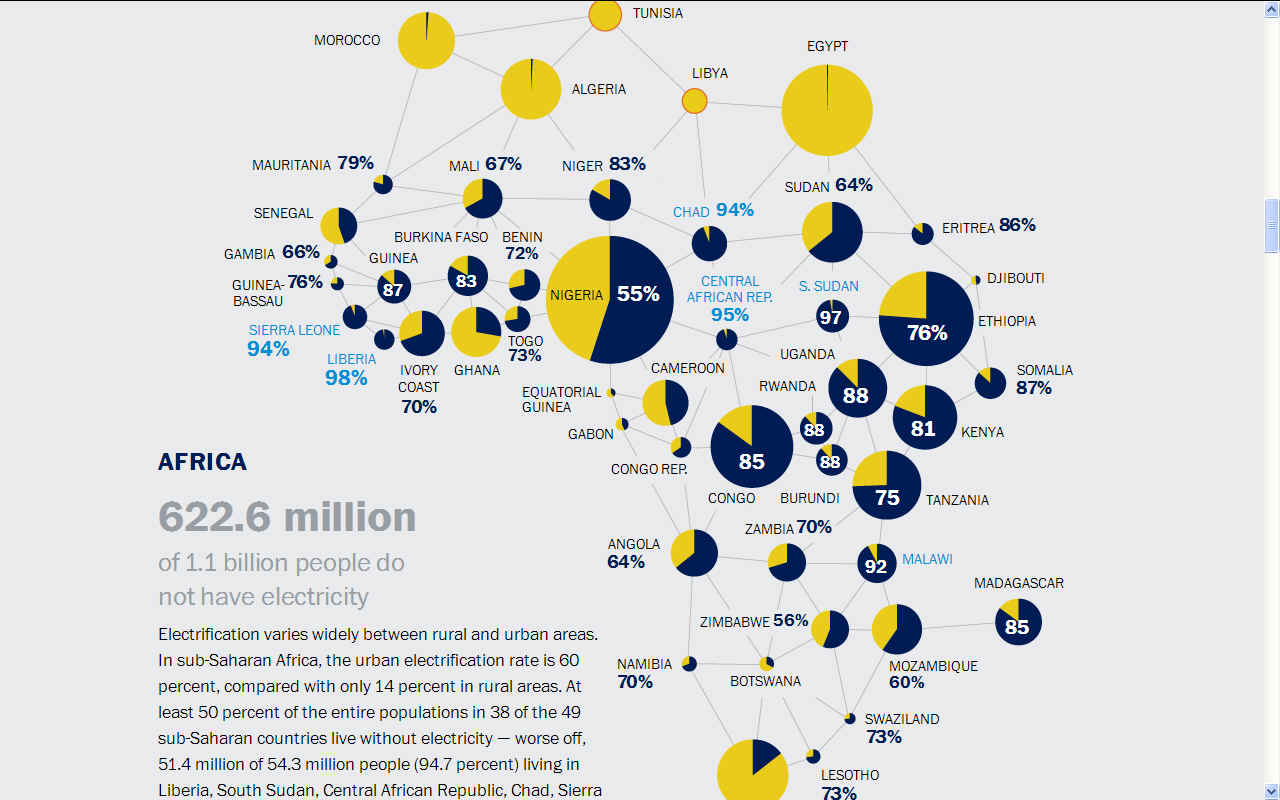
TAKEPART: AFRICA GOES OFF GRID DEC 2016
When an African country decides to build a power plant to serve people close to cities, it still takes an average of nine years for households to get electricity, according to a 2014 World Bank report.
“By focusing primarily on the grid, you’re making a choice for people that you have to wait,” he said. “You have to wait nine years to get an electrified health clinic. You have to wait nine years for your kids to use a
computer at
school. You have to wait nine years for whatever job you’re doing manually right now to get an electrified variant up and running.”
While grid-tied electricity can meet industrial demands, rural villagers who have no power don’t need that right now. “Does a small village in the Kenyan countryside need to run an arc welder, a clothes dryer, and a sawmill simultaneously? No, they don’t. What they need is something to improve their lives.”
Even for industry, microgrids can often do the trick, supplying heating and cooling and driving small machinery such as grain mills and pumps for irrigation.
Off-grid can be the most affordable solution for people living near cities too. As African cities boom, new buildings, including slums, are springing up on the urban periphery. People in these areas are frequently opting for community minigrids or solar home systems.
“If you do not have an air conditioner, a dishwasher, or electric cooking, you don’t need grid-connected electricity,”
“You can get along with 130- or 200-watt peak on your roof. You can have a small fridge, your mobile charging, light in every room, and a TV running off of that.” 
LINKS
& REFERENCE https://www.lcedn.com/ http://www.takepart.com/article/2016/12/08/africa-goes-grid-bring-power-rural-villages/ https://esrc.ukri.org/funding/funding-opportunities/gcrf-sustainable-energy-and-international-development-beyond-technology/ https://www.ukri.org/research/global-challenges-research-fund/ https://www.washingtonpost.com/graphics/world/world-without-power/ https://edition.cnn.com/2016/04/01/africa/africa-state-of-electricity-feat/index.html

Please
use our A-Z
INDEX to navigate this site
|








